Top Air Force Effort, MDC2, Threatened By Proprietary Data: Goldfein
Posted on
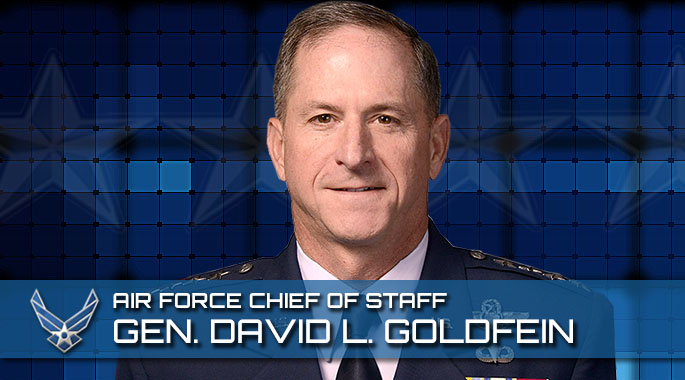
CAPITOL HILL: If the Air Force wants to build a single global network linking forces in the air, sea, land, space, and cyberspace, it must first eliminate the proprietary standards that keep its existing systems from sharing data. That’s the key conclusion the service’s Multi-Domain Command & Control taskforce recently reported to the Chief of Staff.
The Air Force can’t realize its grand vision for future warfare unless it overcomes this mundane but intractable obstacle. It’s a problem rooted not just in technology, the head of the Air force said, but in long-established contracting practices and business models.
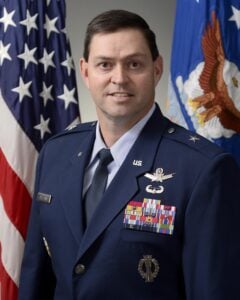
Gen. Chance “Salty” Saltzman
“It really is about the data,” Gen. David Goldein told an Air Force Association breakfast this morning. Goldfein became Air Force chief of staff a year ago and soon tapped Brig. Gen. Chance “Salty” Saltzman to lead “a year-long analysis of the future of Multi-Domain Command & Control.” Saltzman’s team is “conducting experiments with what we call ‘data to decision,’ seeking the best way to fuse multiple sources of information into a common operating picture for leadership,” Goldfein said. The goal, he went on, is to empower commanders to combine and recombine forces from every service and every ally “to cause multiple simultaneous dilemmas for our adversaries at a speed they can never counter.”
Goldfein said he gave the team wide discretion to define the problem. “Where they really seem to have centered, in the update I got just recently,” he said, “it really is about the data, and how do we build a contractual vehicle that makes information sharing profitable for industry?”
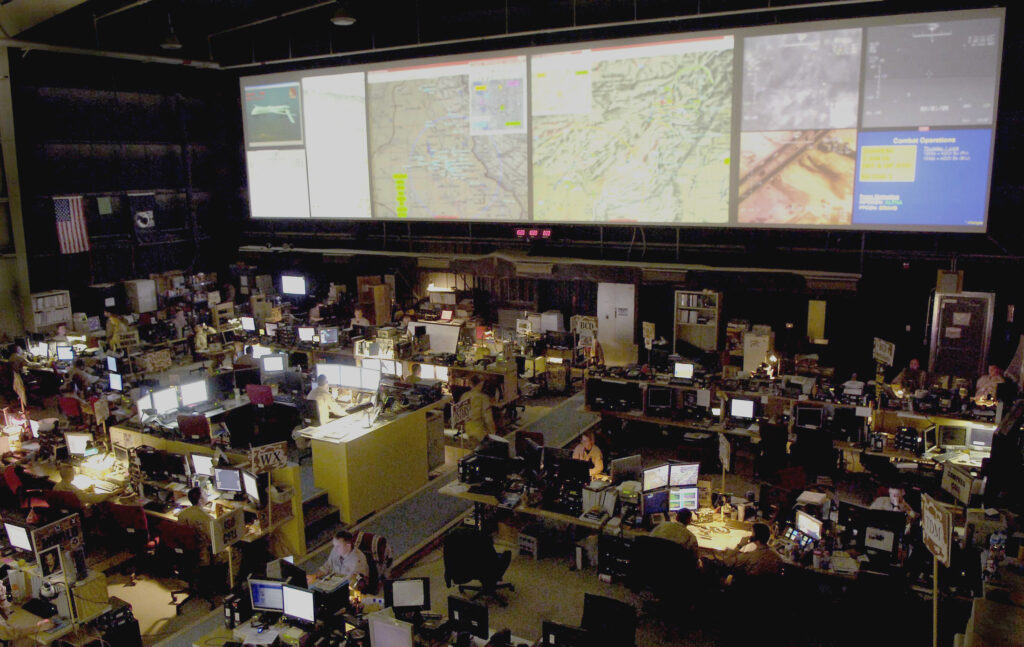
Foreign liaison personnel in their cloistered section of Central Command’s Combined Air Operations Center (CAOC).
The War on “Vendor Lock”
Such a reform would overturn decades-old business practices. Defense companies accept losses on R&D and even production contracts so they can get their product in service, after which they enjoy a profitable monopoly for servicing, sustaining and upgrading it. Once you achieve “vendor lock,” the military has to keep coming back to your company. Why? No one else can work on your system, because no one else has your proprietary information on how it works.
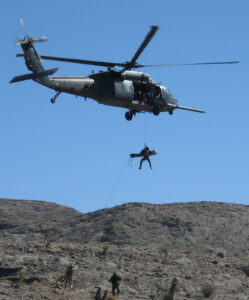
Air Force pararescue testing
This model works great for contractors, less so for warfighters. In the Coalition Air Operations Center at al-Udeid Air Base, which Goldfein once commanded, different functions are performed by different teams – often from different services or even different nations – and each uses different and often incompatible information technology. For example, he said, the space cell – working on satellite communications, navigation, and intelligence – is literally in arm’s reach of the search and rescue cell – which could definitely use satellite intel. But each cell has its own proprietary technology from a different vendor, so they can’t simply share data. Instead, he said, “below the feet of those great operators… what you find would be gateways that then somehow re-translate the data in a way we could share.”
Kludging cells together this way works, sort of, but “it’s far too slow for 21st century warfare,” Goldfein said. What he didn’t say is that, if the cumbersome gateways don’t work, the fallback system is even slower: Someone from one cell walks over to the next one, stares at their screen, copies down the data by hand, walks back, and enters it by hand.
 The alternative is what’s called open architecture: Every vendor must comply with a common set of standards that are known to all. That allows users to unplug one company’s product and plug in another’s — much the way an iPhone or Android can load any new app as long as the programmer complies with Apple’s or Google’s standards. Get the underlying infrastructure right, and people can keep inventing new applications for it, the way Uber uses the same roads as taxis but in a different way.
The alternative is what’s called open architecture: Every vendor must comply with a common set of standards that are known to all. That allows users to unplug one company’s product and plug in another’s — much the way an iPhone or Android can load any new app as long as the programmer complies with Apple’s or Google’s standards. Get the underlying infrastructure right, and people can keep inventing new applications for it, the way Uber uses the same roads as taxis but in a different way.
“Focus on the highway before we focus on the truck,” Goldfein said. “Our first question in any acquisition program of the future is not going to be what it can do. Our question will be how does it connect?”
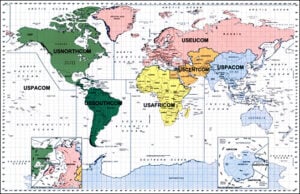
The military’s geographical Combatant Commands (COCOMs).
That philosophy – build the highway before the truck, the network before the weapon – is central to Goldfein’s entire plan to modernize the Air Force. (Modernization, in turn, is one of Goldfein and Air Force Secretary Heather Wilson’s top five priorities, along with readiness, space, personnel and allies). Future conflict will be far too complicated and interconnected for the military to solve specific problems with specific weapons developed and employed in isolation, Goldfein said.
“First, future conflict will be trans-regional. Doggone it, our adversaries are not paying attention to our combatant commander maps,” Goldfein said. “It will be multi-domain… air, land, sea, space, cyber, and I add a sixth, undersea.”
“It will be multi-component: We’re more interdependent on each other as services than we’ve been in our history,” Goldfein continued. “It will be multi-national. Our greatest strategic advantage in any conflict are our allies and partners. Simply put, we have them, our adversaries don’t….So we must advance our ability to fight together in an age when information sharing is vital to success.”
Subscribe to our newsletter
Promotions, new products and sales. Directly to your inbox.
